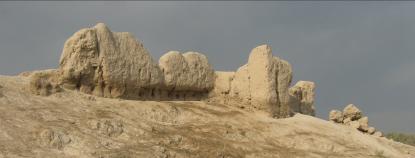2024. May 5. Sunday
Hungarian National Museum - Esztergom
|
|
Address: 2500, Esztergom Szt. István tér 1.
Phone number: (33) 415-986
E-mail: varmegom@invitel.hu
Opening hours: 01.11-31.III.: Tue-Sun 10-16, 01.04-31.10: Tue-Sun 10-18
|
The exhibition has closed for visitors.
2011.06.07. 00:00
Museum tickets, service costs:
|
Ticket for adults
|
900 HUF
|
/ capita
|
|
Ticket for students
|
450 HUF
|
/ capita
|
|
Ticket for pensioners
|
450 HUF
|
/ capita
|
|
Ticket for families
|
1600 HUF
|
/ family
|
|
Guide
|
3200 HUF
|
|
|
Photography
|
1600 HUF
|
|
|
Video
|
3200 HUF
|
The Hungarian National Museum - Heritage Protection Centre and the Archaeology Institute of ELTE co-organized the exhibition with the Györffy István Nagykun Museum of Karcag. The archaeological excavation of the fortress station from the 10-14th century in the Kazakhstan section of the Silk Road, the Töleb, is presented in the Fortress Museum of Esztergom.

The fortress on 120x100 areas was built in the 10-12th century of sun-dried brick, and was in use only for 50-100 years. The walls built on ram base were oriented to the four cardinal points, with towers in the corners and other strategic points. The excavations are near the Kazakh town, Merke, the twin town of Karcag.
The excavation works are overseen by the professor for ELTE, Mordovin Maxim. The MNM-NÖK is a professional partner in the works, as its task is to research heritage related to Hungary, even across the borders. To learn more about the material culture of the original settlers, their costumes it is very important to find out what they were influenced by in the steppe, who they kept relations with.
The exhibition shows the present day Kazakhstan, her people, historic memories important for Hungarians and the results of the excavations. The ethnographic material from Merke was lent to us by the Karcag Museum.

The fortress on 120x100 areas was built in the 10-12th century of sun-dried brick, and was in use only for 50-100 years. The walls built on ram base were oriented to the four cardinal points, with towers in the corners and other strategic points. The excavations are near the Kazakh town, Merke, the twin town of Karcag.
The excavation works are overseen by the professor for ELTE, Mordovin Maxim. The MNM-NÖK is a professional partner in the works, as its task is to research heritage related to Hungary, even across the borders. To learn more about the material culture of the original settlers, their costumes it is very important to find out what they were influenced by in the steppe, who they kept relations with.
The exhibition shows the present day Kazakhstan, her people, historic memories important for Hungarians and the results of the excavations. The ethnographic material from Merke was lent to us by the Karcag Museum.
